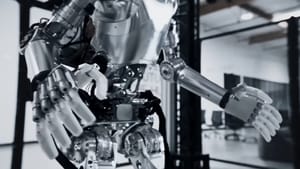Advancements in artificial intelligence are steadily reshaping industries across the globe, and the field of aviation is no exception. The introduction of AI co-pilots into aircraft cockpits marks a significant step forward in enhancing aviation safety and operational efficiency. These sophisticated systems, designed to accompany human pilots, leverage machine precision to support decision-making processes, monitor critical flight parameters, and reduce the potential for human error.
AI co-pilots are not intended to replace human expertise but to complement it, creating a more symbiotic relationship between the pilot and the aircraft. By incorporating real-time data analysis and adaptive learning capabilities, AI can assist in navigating complex situations that might otherwise challenge even the most experienced aviators. This cooperative dynamic augments the skill set of the pilot, ensuring that both machine and human insights contribute to safer skies.
The fusion of human intuition with AI's rapid computational abilities offers a promising outlook for the future of flight. As these technologies continue to evolve and integrate into the aviation infrastructure, they hold the potential to significantly decrease the risks associated with air travel, increase efficiency, and enhance the overall safety of the aviation industry.
The Role of AI in Modern Aviation
Artificial intelligence is reshaping the aviation industry by enhancing autopilot systems and improving the collaboration between humans and machines. This integration promises a new level of operational efficiency and safety.
Advancements in Autopilot Systems
Autopilot technology has advanced from simple mechanical devices to complex AI-driven systems. Modern autopilots employ algorithms and neural networks to enable fully autonomous flight control, capable of handling a wide range of in-flight scenarios with minimal human input. The evolution of these systems is a testament to AI's potential in reducing operational errors in aviation.
| Date | Incident | Description | References |
|---|---|---|---|
| March 27, 1977 | Tenerife Airport Disaster | Two Boeing 747 jumbo jets collided on the runway at Tenerife Airport in the Canary Islands, resulting in the deaths of 583 people. The accident was caused by a combination of poor visibility due to fog and confused communication between air traffic control and the pilots of the two planes. | Tenerife airport disaster |
| July 1, 2001 | Aeroflot Tupolev Tu-154M Crash | A Tupolev Tu-154M airliner operated by Aeroflot crashed into the Sea of Japan shortly after takeoff from Khabarovsk Airport in Russia, killing all 145 people on board. The accident was caused by the pilots' decision to take off in a thunderstorm. | link |
| August 24, 2001 | Comair Flight 5191 | A Canadair CRJ-100 regional jet operated by Comair crashed into a field shortly after takeoff from Lexington-Bluegrass Airport in Kentucky, killing all 29 people on board. The accident was caused by the pilots' failure to properly extend the flaps and slats before takeoff. | Comair Flight 5191 |
| November 12, 2006 | Gol Flight 1907 | A Boeing 737-800 airliner operated by Gol Transportes Aéreos crashed into the Amazon rainforest in Brazil, killing all 154 people on board. The accident was caused by a combination of factors, including the pilots' failure to follow proper procedures and the lack of a collision avoidance system on the plane. | Flight_1907 |
| June 30, 2009 | Yemenia Flight 626 | An Airbus A310 airliner operated by Yemenia Airways crashed into the Indian Ocean off the coast of the Comoros Islands, killing all 153 people on board. The accident was caused by the pilots' failure to properly respond to a stall warning. | Yemenia Flight 626 |
Human-Centric AI-Enabled Aviation
In the realm of human-machine interface, AI is creating a synergistic relationship, where human intuition is supported by machine precision. This approach provides a vital safety net by integrating AI as a collaborative partner, thus enhancing the decision-making process to manage potential risks more efficiently.
MIT's Contribution to Aviation AI
The MIT Computer Science and Artificial Intelligence Laboratory (CSAIL), under the guidance of leaders such as Daniela Rus, is pivotal in developing liquid neural networks that adapt to changing conditions. Their research focuses on improving the risk level during flight and the success rate of navigating to designated waypoints, solidifying their position at the forefront of aviation AI.
A key area of focus is enabling AI pilots to better assess and adapt to risk during flight operations. The liquid neural network architecture pioneered at CSAIL demonstrates a strong capability to dynamically optimize flight paths according to changing conditions. This allows the AI to navigate to target destinations with a high success rate, while considering safety and efficiency.
By improving in-flight risk management and navigation reliability, CSAIL's research with liquid neural networks is paving the way for AI adoption across aerial vehicles and aircraft. Their work firmly establishes MIT as a powerhouse incubating aviation-focused AI to enhance vehicle autonomy, resilience and trust. With Daniela Rus and others leading the way, MIT CSAIL continues to pioneer solutions that will be integral to the future of intelligent flight at scale.
The breakthroughs emerging from this academic research hub demonstrate how AI innovation can transform air travel to become safer, more efficient and more accessible globally. MIT CSAIL's contributions continue to push the boundaries of what autonomous aviation can achieve.
Operational Efficiency and Safety Enhancements
AI boosts operational efficiency and enhances safety by quickly identifying issues, thereby allowing for rapid responses. AI co-pilot systems are designed to be decision-making assets, aiding pilots in recognizing traffic patterns, potential hazards, and in selecting emergency landing fields.
AI Co-Pilot Technologies and Tools
Cutting-edge AI co-pilot systems are now set to revolutionize the aviation industry. These technologies equip aircrafts with intelligent camera-based tools that function as an additional pilot, providing enhanced situational awareness and reliability.
Companies like Avidyne are pioneering AI co-pilot solutions, such as the PilotEye Vision System, that incorporate deep neural networks capable of complex processing. Integrating algorithms that mimic human visual cognition, these tools recognize flight instrumentation, terrain, obstacles, and patterns effortlessly.
By effectively mirroring a human pilot's alertness and rapid response capabilities, AI co-pilots like PilotEye ensure precise navigation and collision avoidance. The system seamlessly tracks instrumentation even in poor visibility conditions, reducing workload and assisting with mapping and flight path optimization.
As they continue to mature, aviation-focused AI co-pilots are on track to handle an extensive range of flight tasks. The combination of state-of-the-art sensors and self-learning aviation intelligence will enable more automated functions and intuitive human-machine collaboration.
With enhanced reliability, precision and adaptability, these emerging technologies are laying the foundations for the next era of AI-human teaming in the aviation industry. Their integration paves the way for improved safety, efficiency and comfort as flying enters an increasingly autonomous future.
Frequently Asked Questions
In recognizing the evolution of aviation technology, this section addresses common inquiries regarding the integration of AI co-pilots into the cockpit, their training implications, ethical considerations, and the impact on the aviation industry.
How does AI improve pilot decision-making in real-time?
AI co-pilots, such as the AI co-pilot enhances human precision, are designed to complement the pilot's skills by providing real-time data analysis and decision-making support, potentially reducing response times and improving situational awareness.
What training is required for pilots to work with AI co-pilots?
Pilots may undergo specialized training to effectively collaborate with AI co-pilots, which includes understanding machine behavior, interpreting AI-assisted recommendations, and maintaining proficiency in manual flying to ensure readiness for any situation.
Can AI in aviation reduce human error and enhance safety?
AI in aviation aims to mitigate human error by continually monitoring flight parameters and environmental data, thus enhancing overall safety by providing advanced warnings and decision-support in critical situations.
What are the ethical implications of AI co-pilots in aviation?
The introduction of AI co-pilots raises ethical questions concerning accountability, privacy, and autonomy within the cockpit, necessitating clear policies to govern AI behavior and its interaction with human pilots.
What systems are in place to ensure an AI co-pilot's reliability?
AI co-pilots are subject to rigorous testing and validation protocols, along with fail-safes and redundancies, to verify their reliability and performance under diverse operational conditions.
How will AI co-pilots impact the future job market for human pilots?
While AI co-pilots represent a shift in cockpit dynamics, they are not expected to replace human pilots but augment their capabilities and enhance the safety and efficiency of flight operations.





